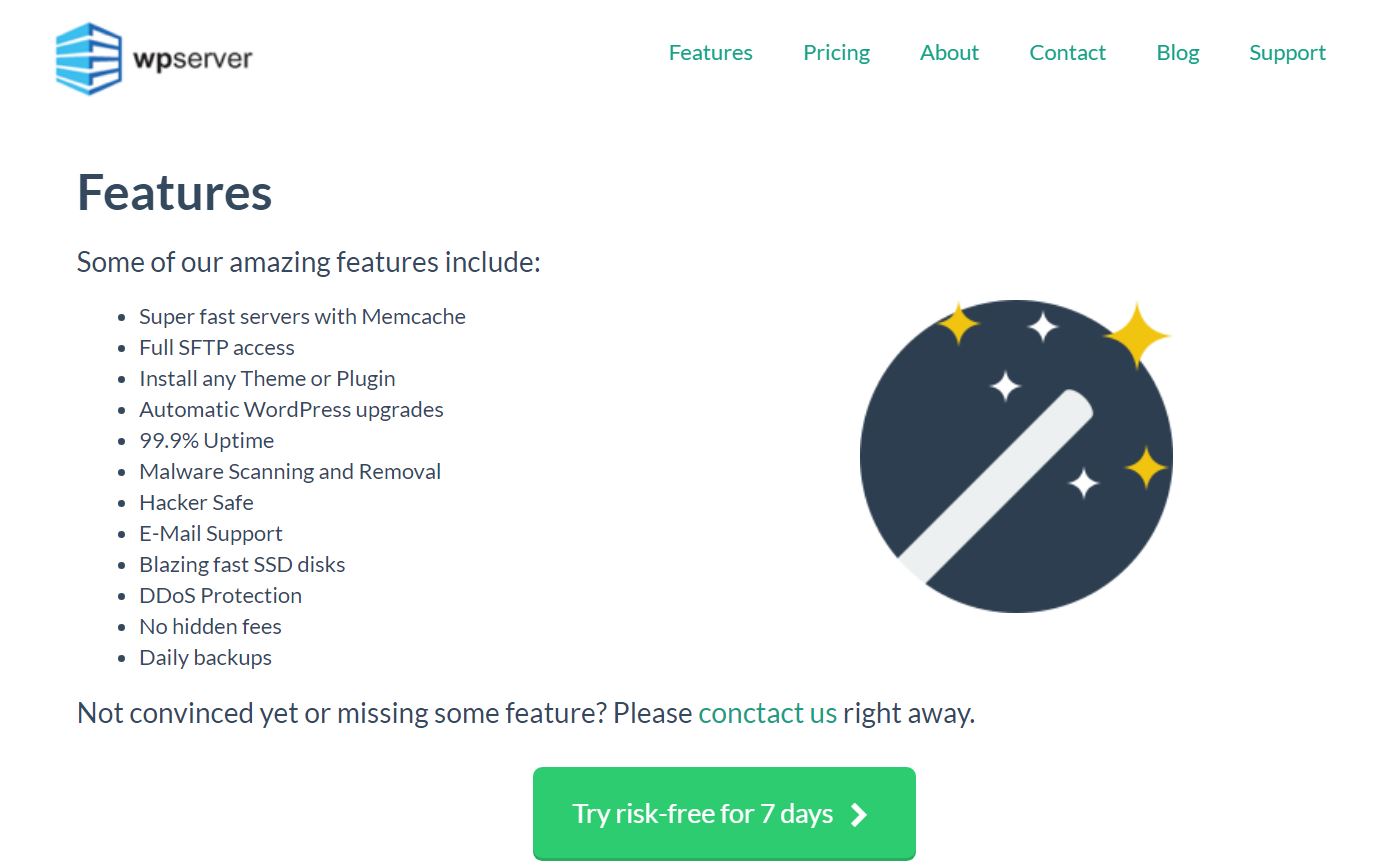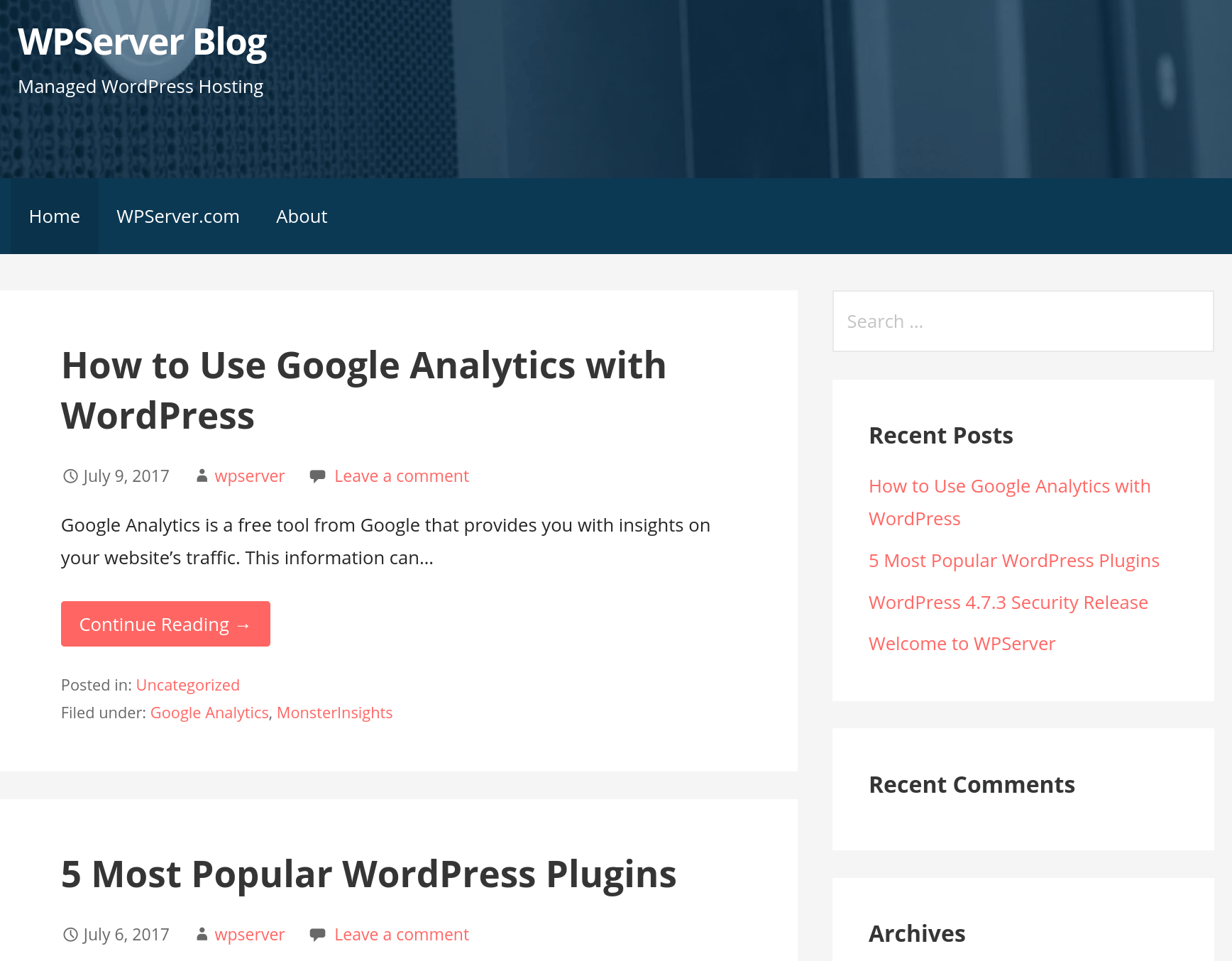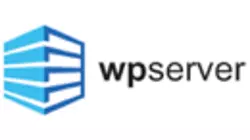WPServer is web hosting brand of Swedish company Triop AB, which dates back to 2008 and has headquarters in Västerås, Västmanland County. As the “WP” prefix implies, WPServer only provides WordPress hosting plans.
WPServer’s English-language website is nicely designed but minimalistic (to put it mildly).
Features and Ease of Use

WPServer’s offerings are simplistic, to say the least. The single all-inclusive managed WordPress hosting package provides the following features:
- 99.9% uptime
- Full SFTP access
- SSD disk drives
- DDoS and malware protection
- Automatic WordPress updates
- Daily backups
- Email support
- Fast Memcached servers
WPServer claims to provide blazing fast speeds, thanks to its use of SSD storage that is much faster and more reliable than traditional HDD storage. The website doesn’t say how much disk space is provided, but it does say you get daily backups (with easy restoration) to protect you against a data loss disaster.
As a pure WordPress host, you won’t be surprised to hear that this vendor provides automatic WordPress updates. This may be a double-edged sword: on the one hand, keeping your site secure, but on the other hand, making you vulnerable to losing data. So tread carefully.
I must admit to being disappointed with the level of details on WPServer’s website, which doesn’t tell you — for example — how much disk space or data transfer you get. It does say you get SFTP access and a 99.9% uptime guarantee (which is around the industry average).
Pricing and Support

On the face of it, WPServer charges very high prices for very few features, and there are no such niceties as a free domain or SSL certificate. However, I don’t discount the possibility that there is more than meets the eye, and I am mindful of the fact that this is a managed service.
WPServer’s features page mentions that you can try it risk-free for 7 days (which is nice), and its pricing page states that you can try it risk-free for 30 days (which is even nicer, but inconsistent). Either way, when you click the link, it takes you to a page that asks for your email address without providing any further information.
You can contact this host by submitting a simple contact form or opening a support ticket. Unfortunately, my pre-sales approach went unanswered. Self-support resources are scarce, save for a blog that was last updated — and in fact, first updated — in 2017.










